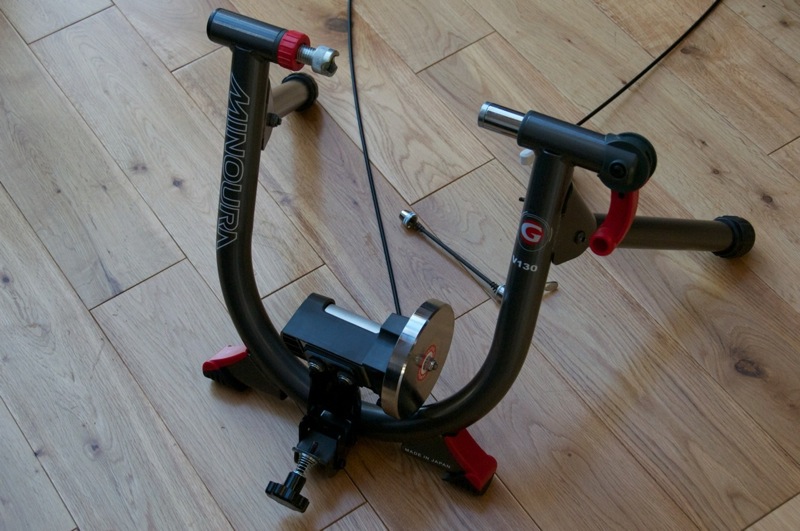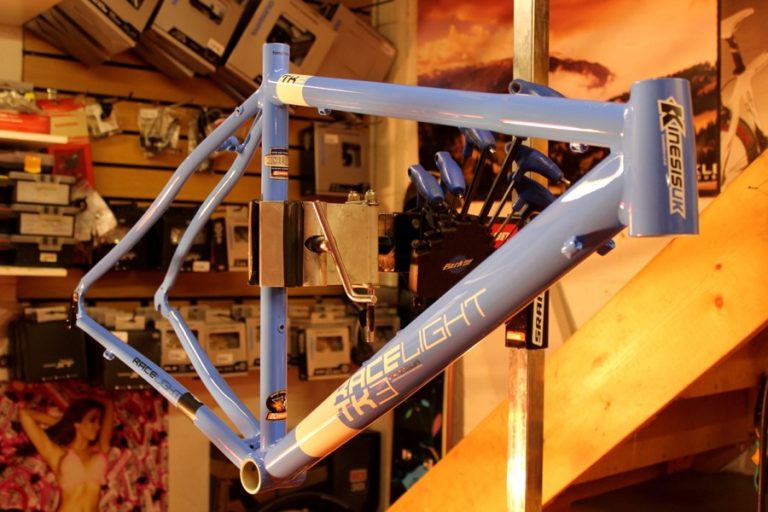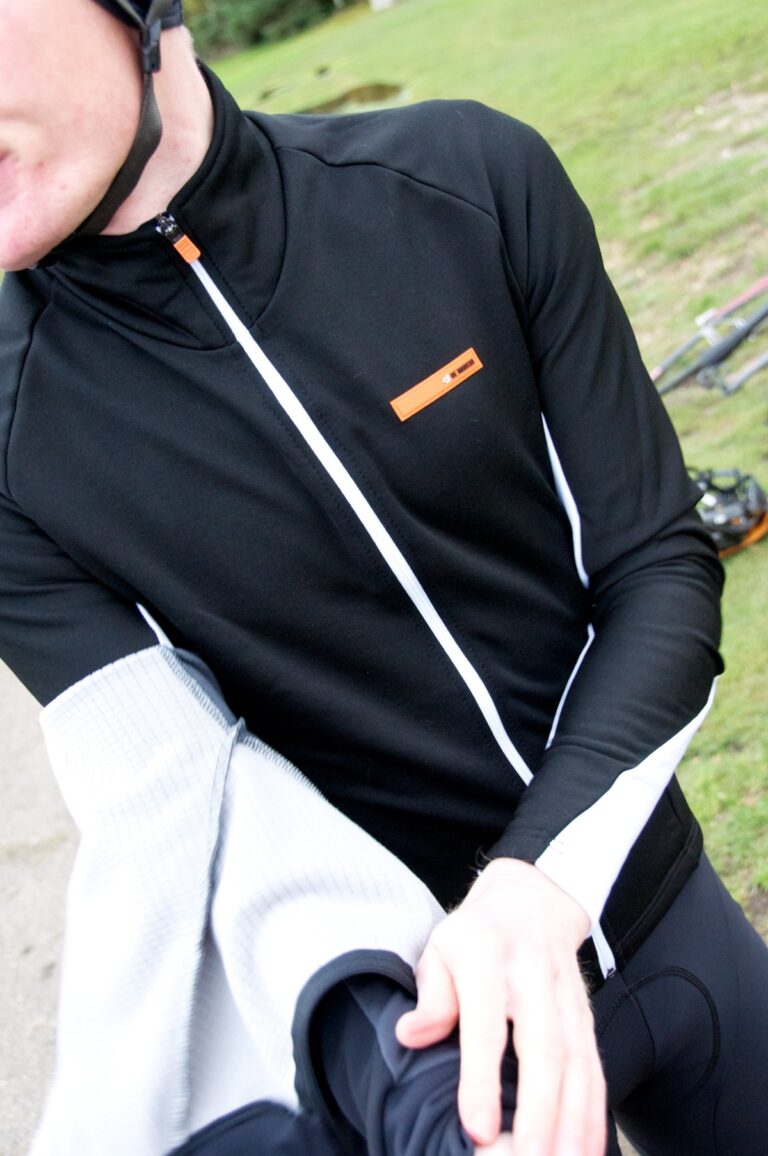What better way could there be to greet the onset of the autumn by dusting off the turbo trainer and enduring the pain of static training for an hour or so?!

Training sessions have started earlier than normal for us following the delivery of a Minoura V130 for test.
The base model of the ‘V’ range, the 130, a magnetic resistance unit, will cost you a pound less than £200. It is the most affordable of Minoura’s selection of trainers compatible with their LiveTraining application, available from Apple’s App Store.
This is best described as an indoor cycle computer which uses a wahoo Ant+ widget to take information from the Minoura heart rate monitor and speed/cadence sensor and display the information to you as you workout on your iPhone (an Android version is being developed as well).
The bonus features, however, are really rather clever. The application has stored information about which trainer you are using and so long as the resistance setting on the trainer and the one in the application are matched, you will get a power readout in watts. This is a very useful tool for more structured training rather than just relying on heart rate readouts and perceived effort.
There is a built-in interval session workout and even the ability to ride one of your own routes. The application converts information from the ride into resistance settings, and coupled therefore with the speed sensor, it is possible to undertake a fairly realistic version of your local loop when there is deep snow on the ground, or icy conditions outside – pretty handy, and maybe more interesting than the usual structured sessions.

If, however, structure is what you crave, a free download of a Sufferfest workout is currently bundled with the V130. For those unfamiliar with the Sufferfest team’s work, brace yourselves for some intense workouts while watching some good racing and training footage from either a rider’s perspective or from a chasing motorcycle. Guns fire as an instruction to push on, horns sound, and brutal workouts occur by dint of trying to keep pace with the pros. It’s good fun, and makes the ‘off season’ easier to cope with.
The sturdy, U-shaped frame of the V130 and its stabilising legs performed well, alleviating any fears of tipping over despite the intensity of the workout, but a front wheel stand would perhaps not have been too much to ask for at this price point.
The Minourva V130’s best feature was the relative silence in which it performed. The 1.1kg flywheel and magnets made for a smooth and relatively quiet ride. The physics underlying a claim for a virtual 1.5kg flywheel were less obvious, but it certainly delivered a natural road feel.
The V130 has seven levels of adjustability delivering 460 watts of resistance at its peak. It comes with a basic but sturdy quick release to clamp the rear wheel into the trainer, and only the lack of a front wheel stand marks down by a fraction what is a excellent, robust and quiet trainer.
In use, the flywheel and unit became extremely hot. This is no great problem, but do heed the warning labels.

It’s worth mentioning also the additional costs entailed by the set up we tested. Wile the trainer costs £199, the Minoura Heart Rate monitor comes in at a penny under £50, as does the speed and cadence sensor. The vital Wahoo Ant+ Dongle costs just under £67.
Interestingly, the Wahoo Ant+ Dongle paired with the Garmin speed and cadence sensor already attached to the Test Rig, and did the same with Garmin’s heart rate monitor, which could save some money if you already have that set up.
The power read out during workouts was certainly a handy feature, as was the opportunity to upload your very own routes. The ability to create bespoke interval training sessions was also useful. The built in storage and comparison features then come into there own as you can track progress.
There’s an option to share the information with friends on Strava, Facebook or Twitter. Some may prefer to keep their training activities private and allow the efforts to speak for themselves next spring.





